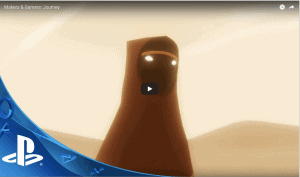As we draw near the next generation of consoles, it only seems fitting that we look back at some of the aspects of the current generation and some of the innovations they brought with them. Now, DLC is definitely not a brand new aspect of gaming, and certainly not if we examine PC gaming. However, in this latest generation of gaming, the concept of downloadable content took on some interesting new forms that are worth noting.
Form 1: Individual DLC
This is the very traditional form of DLC that we’re all too familiar with. Whether it provides us with more maps for an FPS game, a new campaign to tackle in an RPG, some new songs for a rhythm game, or some new cars to drive in your favourite racing title, it’s a single downloadable package that gets released after launch in an attempt to not only provide new content to players, but also increase the length of time we spend playing said title. The price will vary greatly, ranging from free to $20 but with the average price landing at around the $10 mark. There may be numerous pieces of DLC released for a single game, possibly with unique price points based on what they provide, but these are all pieces that you must buy and download separately. Occasionally this form of DLC will be content that is on the disc, merely locked away, but not nearly as frequently as the next form of DLC.
Form 2: Day One DLC
This category is quite possibly the most controversial as it represents extra content that is made available at the launch of the title. What makes this controversial is that sometimes the bonus material which is made available for us to purchase on the release date is content that is already on the disc and you are simply paying to have it unlocked. By now, a large number of developers have realized that gamers do not blindly buy extra content and that if we notice your extra content is only a download of 108KB in size, not only will we raise our voices in anger, but we may also pass up purchasing that content on principle.
There is a very large distinction to be made in this category of DLC though because sometimes day one downloadable content will be bonus material that isn’t already on the disc and it is legitimately material which has been developed between the game being sent to production and the time the game launches. In this case, there is absolutely no reason to be upset with the developers for providing it as quickly as possible, but due to the stigma attached, there tends to be a number of gamers who opt not to purchase the extra content because they feel it should have been included in the retail version of the game. I fully support gamers speaking with their wallets when they disagree with practices of certain companies, but punishing developers for spending the time between production and launch creating new content seems absurd. Because of the outcry against day one DLC, it only makes sense that developers would be hesitant to release downloadable content at launch even if it is ready for consumption. Even waiting for a month after launch negates most of the opposition a day one release for DLC would cause, so while the developers may wish they could provide the content in a more timely manner, they know more people will be open to purchasing it if it’s not immediately available.
Form 3: Season Passes
This style of DLC has been one of the most recent variations to emerge but seems to be a very popular option amongst developers and publishers due to the fact that they can have gamers buy the DLC before it is even created. If you had asked me at the start of this generation if I thought that gaming companies would essentially create pre-orders for DLC, I would’ve told you that you were off your rocker, but as it turns out, it’s not such a crazy idea after all, at least not by the standard that it exists today. If you boil the concept down to the fact that we are actually purchasing a set number of DLC packs, usually without a concrete idea of what all will be in these downloadable packages, it sounds absolutely mad and people outside of the gaming population would likely call us a bunch of loons. That’s not to say that purchasing the season passes for retail games isn’t without its merits though.
When the season pass is made available, it’s generally a little below the cost of purchasing all of the downloadable content separately and if you were likely to buy them all anyway, then you may as well save yourself some money. As previously stated, this method for creating and selling DLC has become increasingly popular over the last year or two and while that may lead you to believe that the rough times for this model are behind us, the odd occurrence like that of Bioshock Infinite‘s season pass reminds us that putting money down immediately may not always yield fast returns. Another potential danger of season passes is that not all of the DLC released for the game may be accessed through the pass. Given that the publisher or developer will get to choose which pieces of DLC are part of the bundle, there may be other DLC released at the same time or even before the included content which you will still have to buy separately.
While this style of DLC was initially strictly purchased through the game itself or your system’s marketplace, it’s becoming increasingly likely that you’ll see a piece of paper hanging in your local game store that you can purchase for the same price, giving you a download code for the season pass, eliminating the online transaction entirely. It’s definitely a step in the right direction for those who don’t feel safe or secure using their credit card information online or who don’t have a credit card, and it’s nice to see that the future isn’t completely digital-only yet.
Form 4: Physical DLC
Yes, I realize that this is somewhat of an oxymoron given that DLC stands for “downloadable content” but if you’re a little confused, allow me to show you Exhibit A:
When gamers think of DLC, chances are that these toys will not be the first thing to pop into their heads. These little figures are not the traditional form of downloadable content by any means, but that’s exactly what they are. Utilizing the “Portal of Power,” players choose the character they control by placing the respective figure on the surface and watch as that character enters the game. Similar to racing or fighting games, you can purchase extra characters or vehicles through DLC, but because the game itself is targeted towards a younger audience that likely don’t have access to credit cards, this DLC is in a physical form, making the extra characters even more appealing. On top of receiving an extra character to use in the game, players get the little statue to play with outside of the game if they like.
I think most of us are familiar with the parents who refer to every console ever made as a “Nintendo,” or the kinds of people who wouldn’t be able to identify a PSP from a 3DS, so being able to have a physical collection of all the extra characters already purchase makes gift giving significantly easier for these poor unsuspecting parents. Quite frankly, this approach to DLC is almost genius from a marketing standpoint, but a large portion of that success relates to the demographic the bonus content is targeting. While I can say that I’ve watched as my friend, a grown man, has spent a solid 5 or 10 minutes in a store debating whether or not to buy an awesome looking creature for Skylanders, the majority of the characters sold go to parents picking them up for their children.
Is this an approach that more and more companies will take when releasing bonus content for games targeted towards a younger audience? Will we see developers release physical versions of DLC for more mature games but in the form of collectibles? If you got a small Claptrap statue for purchasing the first piece of Borderlands DLC, or got a figurine of Roach from Call of Duty for buying the first map pack, would you be more inclined to purchase it? This is just some food for thought as we move into the next generation, but in the past few years, we’ve clearly seen some varied approaches to selling consumers downloadable content.



